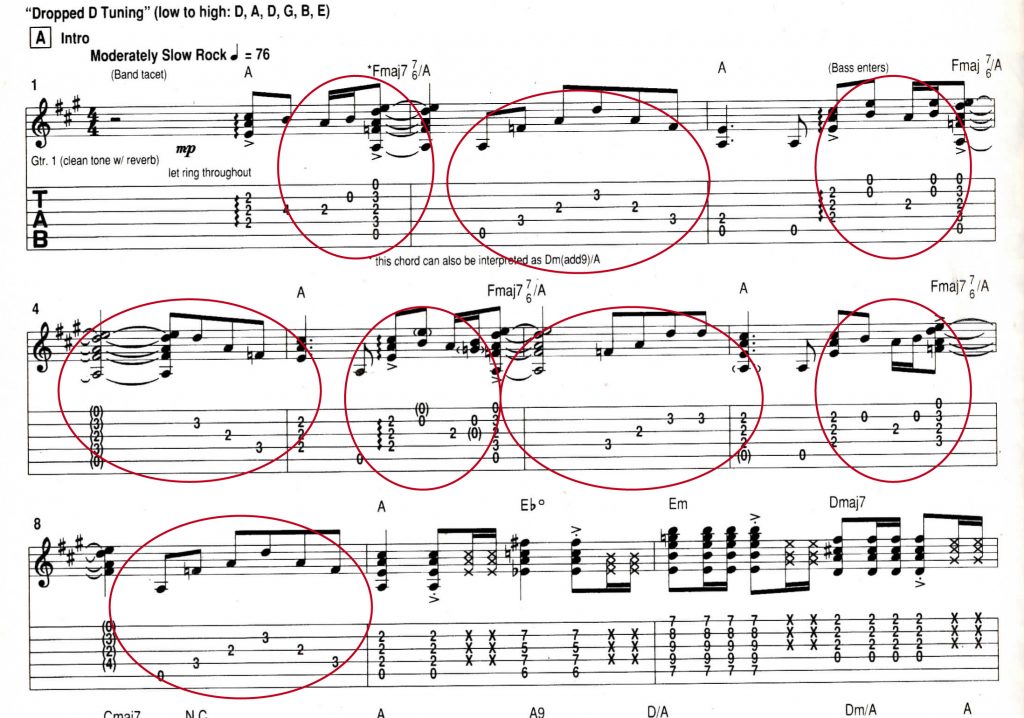The Intro Figure
In an earlier article we talked about the importance of tenacity when you are trying to learn a cover or guitar part perfectly (N4N). This is invaluable practice for developing your ear and acquiring the discipline that will make you a better musician. It also expands your musical vocabulary by challenging you to learn and match the unique articulations and inflections of the musician you are trying to copy . Ten Years Gone starts with a deceptively simple opening figure that we’ve already seen is a bit of a finger crunch. Complicating the learning of this figure is Jimmy Page’s penchant to almost never play it the same way twice. His variations (as the figure repeats) don’t appear to follow any predictable or specific pattern either. What appears and sounds like a simple introductory figure (also later used in the verses) is actually an elusive little figure whose subtleties and variations can be overlooked or skipped by lots of players while learning the song. YouTube lesson guys will teach this song and conveniently leave those variations up to you, but what usually happens is that the variations themselves get dropped and people learn the song by repeating the same figure over and over until it becomes predictable and boring. You’d be very hard pressed to find anyone on YouTube playing or teaching these variations as they were played by Jimmy and this is not good.
Variations
Musically there are two types of variation at play here: melodic and rhythmic. Take a look at the variations in the intro:
The figure itself is only two bars long and essentially repeats for a total of 4 plays (8 bars), but those variations are key to making it an 8 bar conversation as opposed to a repeating two bar phrase.
Think of it this way: It’s not a two bar intro that repeats itself; it’s an 8 bar intro that is played once.
Note how the Fmaj76⁄7/A chord is held for varying lengths? Note how the arpeggiated figures that follow from the chord vary both melodically but also rhythmically? Also note the very subtle differences in how the figure moves between the A chord and the Fmaj76⁄7/A. Some of these have been circled for you in the excerpt above.
Now it’s very unlikely that you’re going to get a bunch of static if you don’t follow Jimmy’s variations exactly when you play this at your next gig. But – if you don’t learn them and at least understand how those variations are important to the song and to what Jimmy is trying to say with his guitar parts, you’ll be missing some of the special touches that make Ten Years Gone so rich and rewarding to listen to and play. It’s like the old adage: You have to learn the rules before you can break them. Well in this sense it’s learn the variations before you vary them! Good luck and do your best.
Feature Image Credit: Spring Blossom collage variations by Timothy K Hamilton, via Flickr, by CC BY-NC-ND 2.0


